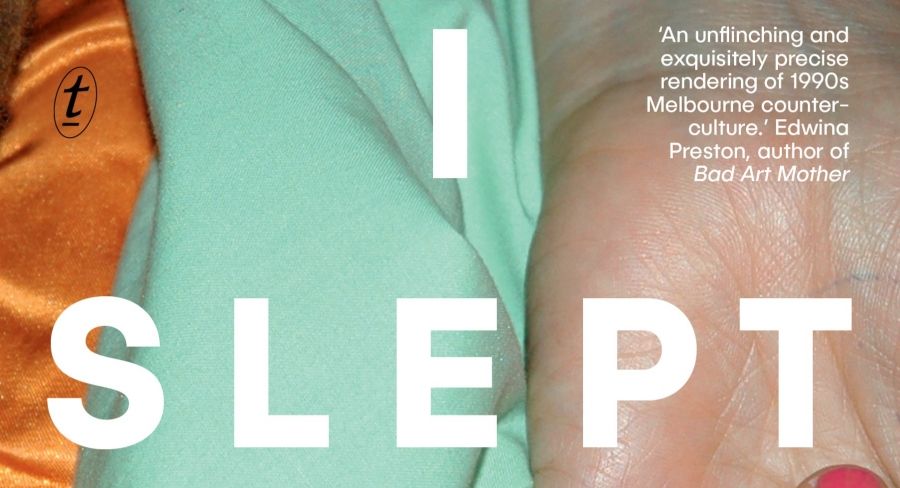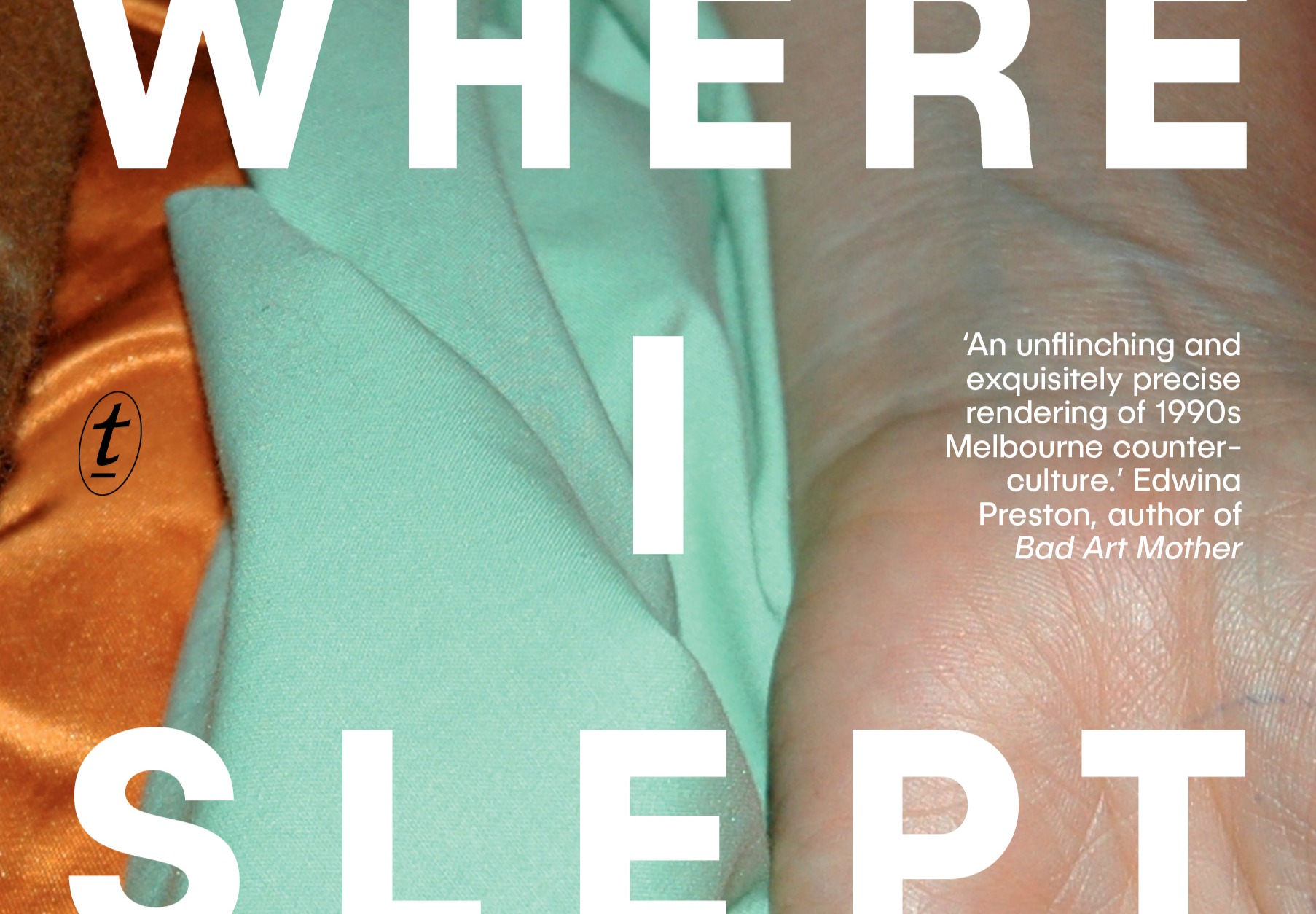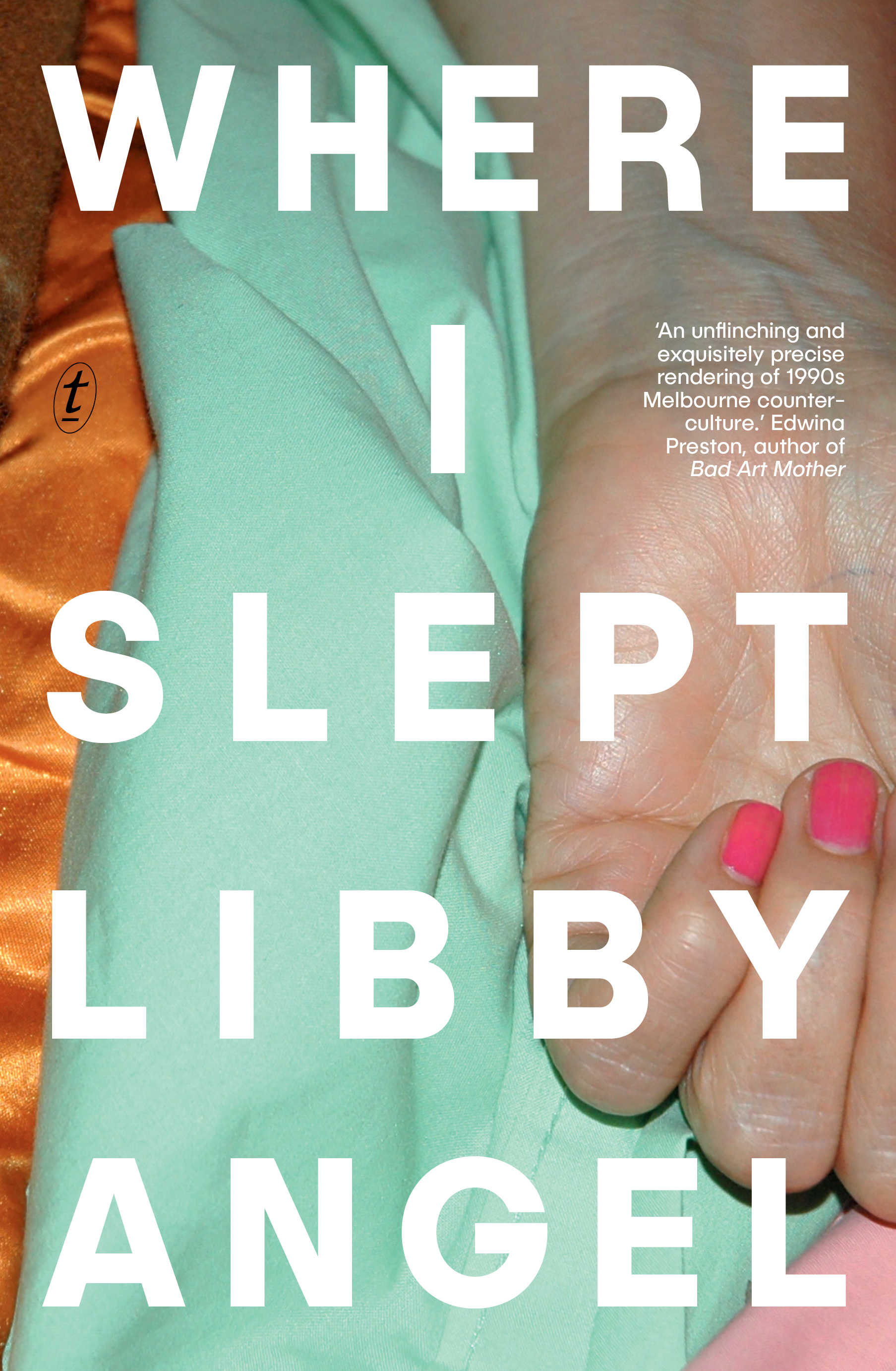
- Free Article: No
- Contents Category: Fiction
- Review Article: Yes
- Article Title: The comfort of tragedies
- Article Subtitle: Libby Angel’s second novel
- Online Only: No
- Custom Highlight Text:
Where I Slept opens with an ending. The nameless narrator, a twenty-something woman, is leaving her rural hometown and the boarding house where she lived, for new adventures in the big smoke – but not before daubing ‘sentimentality is the enemy of truth’ on the front gate of her soon-to-be former university. That proverb proves prophetic as the narrator establishes a new life in Melbourne’s inner city. This is the 1990s, just before gentrification had gained ascendance, when the area still had a ‘bohemian’ feel. The narrator drifts through sharehouses where rent goes unpaid and housemates are replaced frequently. She frequents seedy bars where strangers shout her drinks, and exhibitions where free booze flows.
- Featured Image (400px * 250px):

- Alt Tag (Featured Image): Jay Daniel Thompson reviews 'Where I Slept' by Libby Angel
- Book 1 Title: Where I Slept
- Book 1 Biblio: Text Publishing, $32.99 pb, 324 pp
- Book 1 Cover Small (400 x 600):

- Book 1 Cover (800 x 1200):

Instead, the author takes a refreshingly non-judgemental look at the folk living in those conditions, suggesting that they are making the best of lives complicated by largely unspoken (but deeply felt) family estrangement, economic disenfranchisement, and poor decisions. The narrator observes: ‘Our tragedies are a comfort. We are not ready to part with them.’
Angel skilfully invokes the gendered nature of the world her narrator traverses. This is a world in which sexism and sexual objectification infect everything from daily rituals to snide asides. The narrator wryly notes that even within ostensibly egalitarian communal living spaces, ‘the women are in the kitchen’. When she shaves her head, ‘the world snaps shut in [her] face’, with men calling her ‘unattractive’ and asking about her motives for de-tressing. The narrator is not passive, though, and the novel provides her with moments of striking resistance. These include her retort to police officers after an abrupt and unwarranted strip search. The humour of the retort leavens the horror of her treatment and gives her back a shred of the dignity she has been robbed.
Where I Slept has some laugh-out-loud moments. These provide welcome reprieves from the ennui and reveal the narrator’s ability to see the lighter side of a life, though the odds seem stacked against her.
Names play significant parts in the book’s narrative world. Some characters are given comical monikers, reducing them to archetypes, though they remain devastatingly three-dimensional and human. There is Sleazy Man, the ogling proprietor of a local business, and the endearingly eccentric Pearl of Mercy. There is Blonde Housewife, the narrator’s yoga buddy and an escapee of suburban conformity, who views the narrator as an embodiment of liberated womanhood. And there is Winter Man, who becomes the subject of the narrator’s longing after a one-night stand. The narrator constantly hopes to run into him, on the street or in a dive bar, and occasionally succeeds. Just when the novel seems to be veering into Fatal Attraction territory, her attraction dissipates, and her would-be beau is revealed to be as arctic as his nickname. He is also pretentious and self-important, as his final appearance makes amusingly clear.
The narrator’s anonymity, combined with the first-person narration and the book’s classification as a ‘work of autofiction’, provokes the question: how much of this actually happened? That is a consideration many authors encourage in their work, and it certainly enlivened the reading experience here.
This reviewer was initially puzzled as to why Angel abbreviated certain locations. For example, ‘S Street’ seems an obvious reference to Smith Street, in the Fitzroy/Collingwood precinct; there are frequent mentions of the environmental enterprise Friends of the Earth, whose Victorian headquarters have long occupied that strip. The ‘R Hotel’ could have been a reference to the Railway Hotel; there are several venues with this name in downtown Melbourne.
Perhaps the author felt that too much specificity would have estranged readers, especially those unfamiliar with the Garden State. The novel’s metropolitan milieu could, after all, be found any-where in Australia during the twentieth century’s denouement. The 1990s has become the topic of lively pop culture nostalgia in recent years; the novel eschews obvious signifiers of that decade (grunge, popular fashions), opting for more subtle cues. These include a Kathy Acker novel (the narrator is not a fan) and an absence of the internet; one wonders how our heroine might have utilised Twitter or Instagram.
Where I Slept will solidify Angel’s reputation as a literary force to be reckoned with. The book’s gritty urbanity and feminist sensibility make it a Monkey Grip of the Y2K era.


Comments powered by CComment